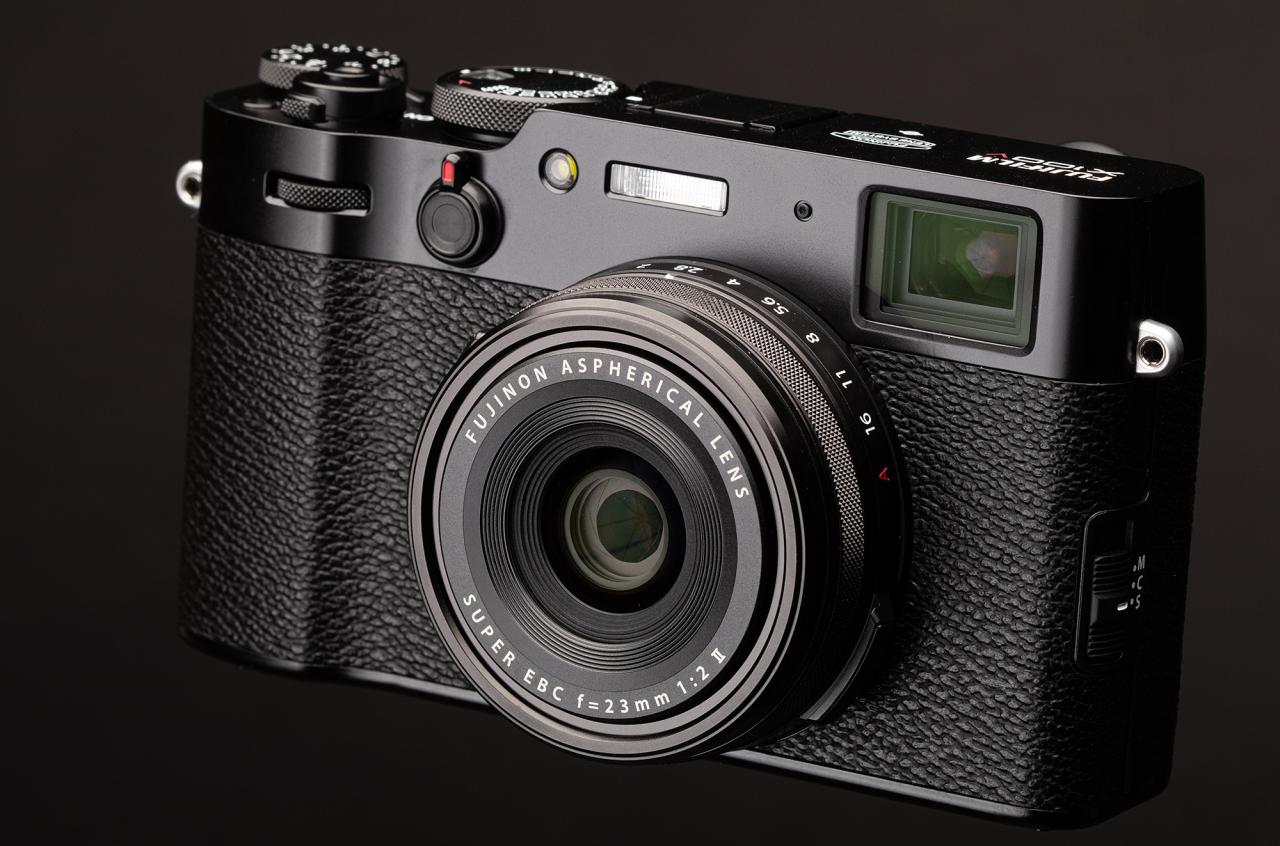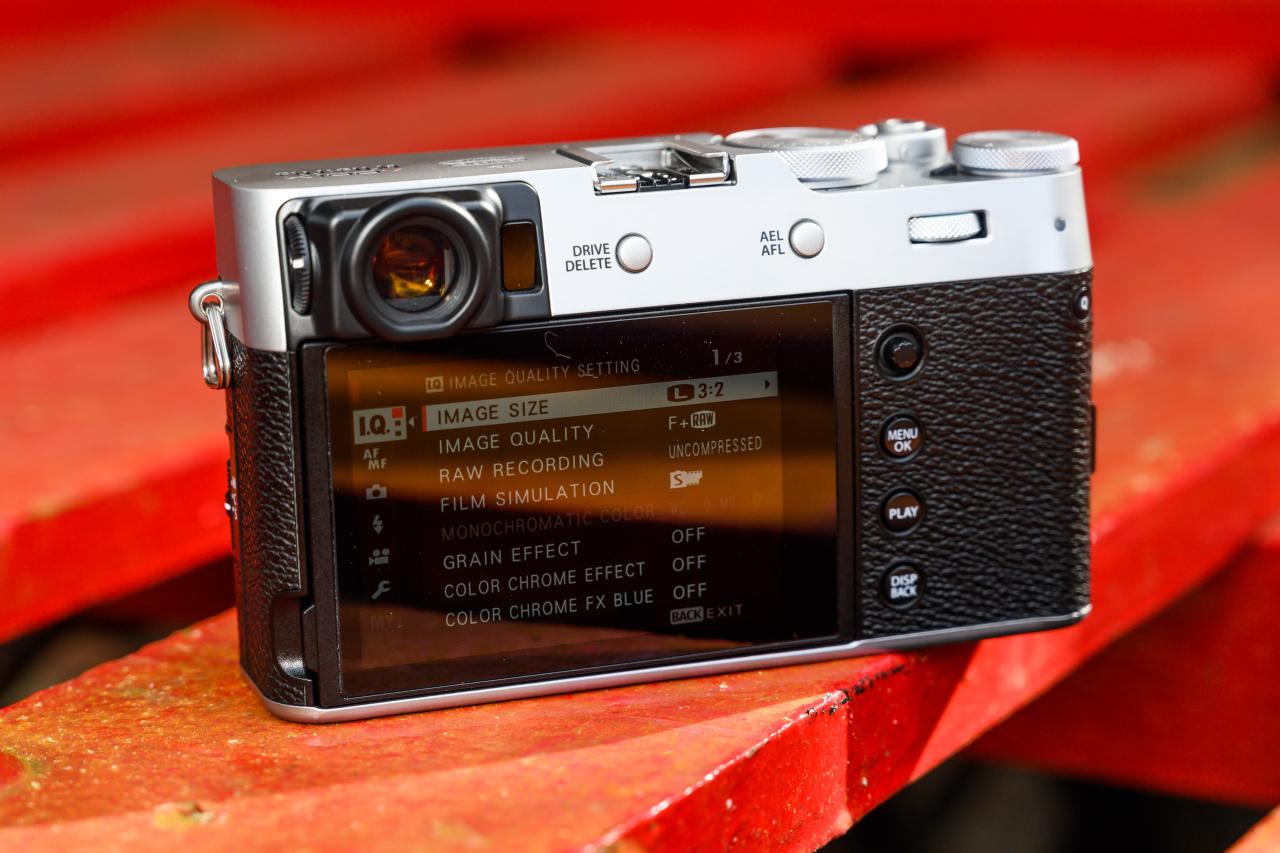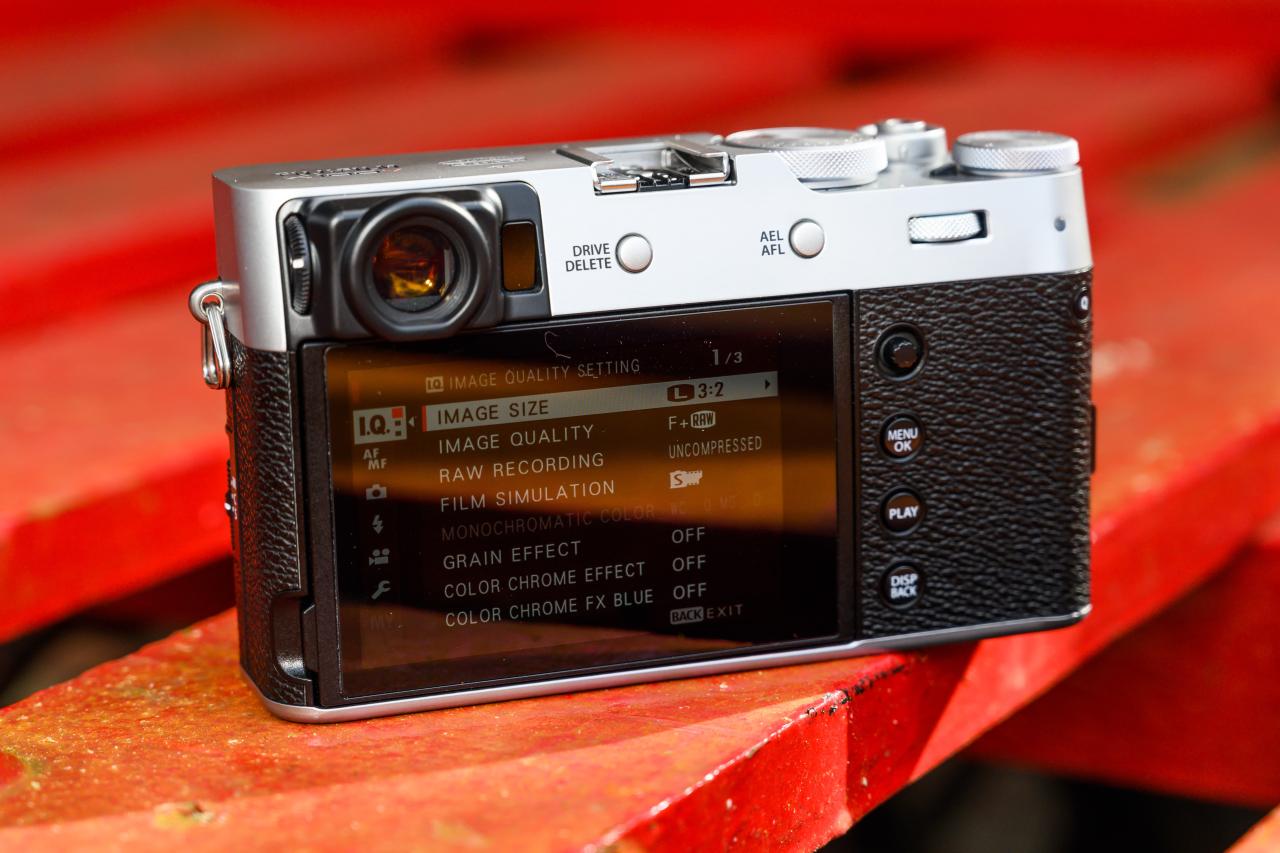The Fujifilm X100V seamlessly blends classic aesthetics with cutting-edge technology, captivating photographers with its retro design and exceptional image quality. This review delves into the camera’s key features, performance capabilities, and user experience, providing a detailed analysis of its strengths and weaknesses. We’ll explore its renowned film simulations, versatile autofocus system, and the overall workflow, offering insights for both seasoned professionals and aspiring photographers.
From its robust build quality to its intuitive interface, the X100V caters to a wide range of photographic styles. We will examine its performance in various shooting scenarios, showcasing its capabilities in street photography, landscape photography, and portraiture. A comparison with key competitors will highlight its unique position in the market.
Fujifilm X100V: A Deep Dive
The Fujifilm X100V, a compact powerhouse, seamlessly blends retro aesthetics with cutting-edge technology. This review delves into its features, performance, and overall user experience, providing a comprehensive look at this popular camera.
Fujifilm X100V Camera Overview
The X100V boasts a 26.1MP X-Trans CMOS 4 sensor paired with a fixed 23mm f/2 lens (35mm equivalent). Its design is a refined evolution of its predecessors, featuring a robust magnesium alloy body and a slightly improved grip. The build quality is noticeably superior to earlier X100 models, exhibiting enhanced durability and a more premium feel.
Ergonomics and Design
The X100V’s design prioritizes a compact form factor without sacrificing usability. The improved grip enhances handling, and the inclusion of a vari-angle touchscreen significantly aids in shooting from various perspectives. The classic control dials provide intuitive access to key settings, fostering a tactile and engaging shooting experience. While maintaining its iconic retro design, the X100V offers a more refined and user-friendly physical layout compared to its predecessors.
X100V vs. Competitors
The X100V competes with other premium compact cameras. Its unique blend of features, retro design, and image quality sets it apart. Below is a comparison table highlighting key differences:
| Feature | Fujifilm X100V | Sony RX1R II | Ricoh GR III |
|---|---|---|---|
| Sensor Resolution | 26.1MP | 42.4MP | 24.2MP |
| Lens | 23mm f/2 | 35mm f/2 | 28mm f/2.8 |
| Screen | 3.0-inch Vari-angle Touchscreen | 3.0-inch Tilting Screen | 3.0-inch Touchscreen |
| Video | 4K/30p | 4K/30p | 4K/30p |
Image Quality and Performance
The X100V delivers exceptional image quality thanks to its sensor and lens combination. The X-Trans CMOS 4 sensor minimizes moiré and false colors, producing incredibly detailed and sharp images. The 23mm f/2 lens is renowned for its sharpness and pleasing bokeh.
Shooting Scenarios and Image Quality

In various shooting scenarios, the X100V consistently impresses. Street photography benefits from its fast autofocus and compact size, allowing for discreet shooting. Landscape photography showcases the lens’s sharpness and dynamic range, capturing rich detail and vibrant colors. Even in low-light conditions, the camera’s high ISO performance remains remarkably clean, minimizing noise.
Autofocus System Performance
The X100V’s autofocus system is a significant improvement over previous models. It’s fast, accurate, and reliable in a wide range of situations. The inclusion of phase-detection autofocus pixels ensures quicker focusing, especially in challenging lighting conditions. Face and eye detection further enhances its performance in portrait photography.
Dynamic Range and High ISO Performance
The X100V boasts a wide dynamic range, allowing for recovery of detail in both highlights and shadows. Post-processing flexibility is significantly enhanced. Its high ISO performance is also commendable, with minimal noise even at higher sensitivity settings, making it suitable for low-light photography.
Film Simulations and Creative Control
Fujifilm’s renowned film simulations are a core strength of the X100V. These emulations of classic film stocks provide unique aesthetic qualities to images, allowing photographers to achieve specific creative looks without extensive post-processing.
Impact of Film Simulations
Each film simulation alters the image’s color palette, contrast, and grain, resulting in distinct visual styles. For example, “Classic Chrome” delivers muted tones and subtle color saturation, while “Acros” produces a high-contrast black and white image with fine grain. “Velvia” offers vivid, saturated colors ideal for landscape photography.
Workflow Using Film Simulations
A typical workflow might involve selecting a film simulation based on the intended mood and subject matter. For street photography, “Classic Chrome” or “Acros” might be preferred, while “Velvia” is well-suited for landscapes. Experimentation is key to mastering the creative potential of these simulations.
Recommended Film Simulations

- Street Photography: Classic Chrome, Acros, Fujicolor 200
- Landscape Photography: Velvia, Astia, Provia
- Portrait Photography: Classic Neg., Pro Neg. Std.
User Experience and Workflow
The X100V’s user interface is intuitive and easy to navigate. The physical control dials provide quick access to key settings, while the touchscreen allows for precise adjustments and menu navigation. The overall handling is excellent, making the camera a joy to use.
The Fujifilm X100V, with its exceptional image quality, is perfect for capturing everyday moments. Imagine using it to photograph the stunning views often showcased on the port dover live camera ; the live feed provides a great scouting location for potential shots. Then, you could easily head out with your X100V and recreate those captivating images with your own unique artistic flair.
Strengths and Weaknesses of Handling
The camera’s compact size and lightweight design are strengths, making it highly portable. However, the lack of a viewfinder magnification adjustment might be a drawback for some users. The vari-angle screen is a significant improvement, offering more versatility compared to previous models.
The Fujifilm X100V’s compact size makes it ideal for travel photography, capturing spontaneous moments with its exceptional image quality. Before heading out on a road trip, however, checking the conditions is crucial; a quick glance at the coquihalla weather camera can help you plan your route and pack accordingly. Then, armed with your X100V, you’ll be ready to capture stunning landscapes, regardless of the weather.
Tips for Optimizing Workflow
Customizing the function buttons to frequently used settings streamlines the shooting process. Learning the shortcuts and mastering the film simulations can significantly enhance efficiency and creative control. Understanding the camera’s strengths and weaknesses allows for informed decision-making in various shooting scenarios.
Accessories and Expandability, Fujifilm x100v
The X100V offers several accessories to enhance its capabilities. These include additional batteries, external microphones for improved audio recording, and lens filters for creative effects.
Available Accessories
- Extra Batteries
- External Microphones
- Lens Adapters
- Filters
- Carrying Cases
Choosing the Right Accessories
The choice of accessories depends on individual needs and shooting styles. For videographers, an external microphone is crucial. Photographers focusing on low-light situations might benefit from faster lenses (via adapters).
Real-World Applications and Examples
Professional photographers utilize the X100V for various genres. Its compact size makes it ideal for street photography, capturing candid moments unnoticed. The lens’s versatility suits landscape photography, capturing wide vistas with detail. Its image quality and autofocus are effective for portraiture, providing pleasing bokeh and accurate focus on subjects.
Example Image Description

Imagine a street scene captured on a crisp autumn day. Using the “Classic Chrome” film simulation, the photographer captures a bustling street corner, bathed in the warm hues of the setting sun. The details are sharp, the colors are subtly muted, and the overall atmosphere evokes a nostalgic feel. The shallow depth of field, achieved with the f/2 aperture, softly blurs the background, drawing the viewer’s attention to the main subject – a lone figure walking past a vibrant storefront.
Strengths and Weaknesses
The X100V’s strengths lie in its image quality, compact design, intuitive controls, and versatile film simulations. However, limitations include the fixed lens and the relatively high price point compared to other compact cameras. The lack of in-body image stabilization is also a noteworthy consideration.
Pros and Cons Summary
| Strengths | Weaknesses |
|---|---|
| Exceptional Image Quality | Fixed Lens |
| Compact and Portable Design | High Price Point |
| Intuitive Controls and User Interface | No IBIS |
| Versatile Film Simulations | Limited Video Capabilities (compared to some competitors) |
The Fujifilm X100V stands as a testament to the enduring appeal of compact cameras with exceptional image quality. Its blend of retro charm and modern technology makes it a compelling choice for photographers seeking a versatile and enjoyable shooting experience. While it may not be without its minor limitations, the overall user experience and exceptional image quality firmly establish the X100V as a strong contender in the premium compact camera market.
Its strengths far outweigh any drawbacks, making it a worthwhile investment for those who appreciate both form and function.
Questions and Answers: Fujifilm X100v
What lenses are compatible with the Fujifilm X100V?
The Fujifilm X100V has a fixed 23mm f/2 lens. While it doesn’t accept interchangeable lenses in the traditional sense, Fujifilm offers different lens adapters for certain legacy lenses.
How good is the video quality on the X100V?
The X100V offers decent video capabilities, shooting 4K video at 30fps. While not its primary strength, it’s suitable for casual video recording.
Does the X100V have image stabilization?
No, the X100V lacks in-body image stabilization (IBIS). However, its lens has a relatively fast aperture, which helps to mitigate some of the effects of camera shake.
Is the Fujifilm X100V weather-sealed?
No, the X100V is not weather-sealed. It’s best to avoid using it in heavy rain or extreme conditions.
